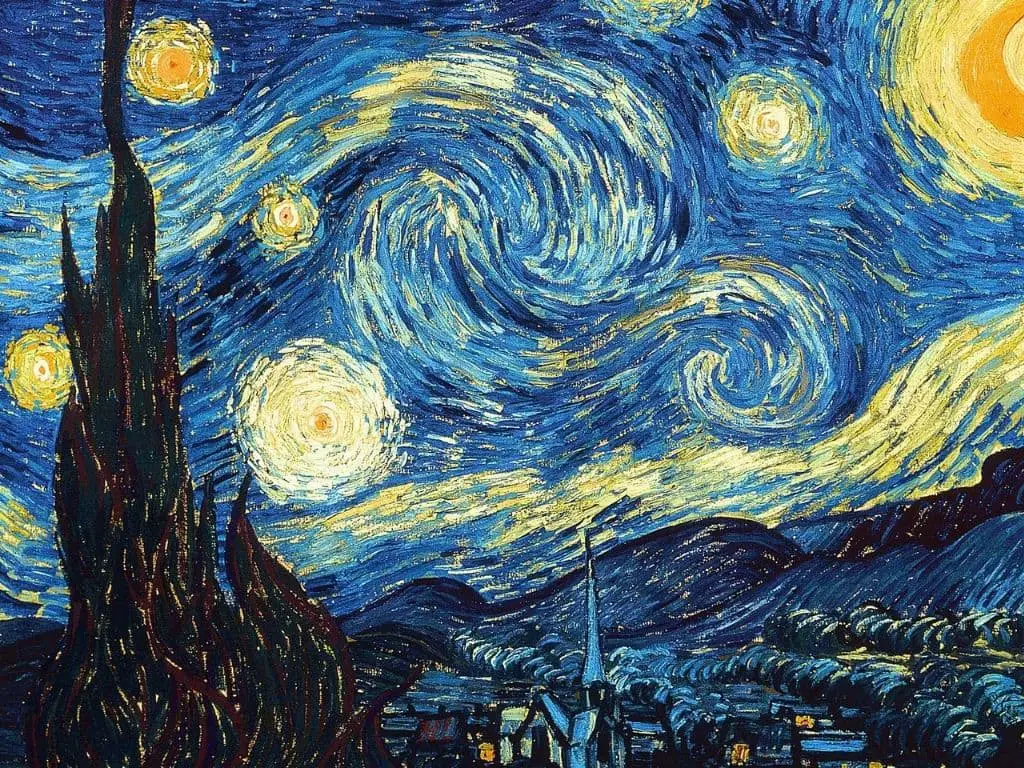There are few paintings that can compare to the likes of the Mona Lisa, but there are some that stand out in our collective memory as true masterpieces. One of the few paintings that I can safely say will be remembered throughout history is Van Gogh’s The Starry Night, and in today’s article, I’m going to explore the painting’s inspiration.
Van Gogh was inspired to paint The Starry Night by the view from the window in the mental asylum that he was confined to in Saint-Remy-de-Provence. After seeing the sun rise over the fields outside of his window, Van Gogh felt compelled to capture the moment’s natural beauty.

Of course, there’s a lot more to the story of one of the world’s most famous works of art than I can possibly fit into a single paragraph. If you’re interested in learning more about why Van Gogh painted The Starry Night, I’ll explore it a little further.
Why Did Van Gogh Paint the Starry Night?
In December 1888, Vincent Van Gogh suffered a mental breakdown while he was living with Paul Gauguin, a French artist that he had convinced to come live with him in the French town of Arles. While they got on well at first, they had a troublesome relationship that came to a head on December 23rd.
While in an argument about their different styles of creating artwork, Van Gogh threatened Gauguin with a razor. Later on that night, Van Gogh was in the midst of a psychotic episode and he found himself cutting off a piece of his own ear, later on presenting it to a prostitute wrapped in newspaper.
After this event, Van Gogh decided to admit himself to the Saint-Paul-de-Mausole asylum. This asylum was mainly designed for wealthy clients who were experiencing mental crises. Since there were relatively few people being kept at the asylum when Van Gogh arrived, he had access to two rooms, one bedroom and one painting studio.
During his time at the asylum, Van Gogh painted some of his most well-known pieces, including Irises. One morning, Van Gogh woke early enough to see the sunrise, and this sight was then etched into his memory. However, Van Gogh wasn’t allowed to paint in his bedroom, from where he could see the view.
Captivated by the scene that he saw, Van Gogh painted over 20 variations of The Starry Night that he further refined. It’s true that Van Gogh hated the idea of painting from memory, and so he essentially used his previous pictures to cement the image of the sight from his window in his head.
This led to methodical reproduction and a painting that looked as if it had been painted from sight, as would be expected from Van Gogh. Instead of using brushes, Van Gogh would apply the paint directly from the tubes to the canvas to get the thick lines that are present in the final version.
Every painting that Van Gogh produced in the series was unique, and the final variation was set apart from the others by the appearance of the celestial objects above it. The trademark spiral galaxy is a point of focus in the final edition, though it wasn’t even present in some versions of the painting.
One thing to remember is that the scene is semi-fictitious, which many observers don’t even realize. There is a much smaller village in the view that Van Gogh had from his bedroom. In reality, the village is a bit further away than it’s depicted in the painting and there is no church steeple.
The Starry Night After Van Gogh
Unfortunately, Van Gogh died of suicide within a year of painting The Starry Night, but we have some indications of how he felt about it from his letters to his brother. Writing to Theo, Van Gogh said, “All in all the only things I consider a little good in it are the Wheatfield, the Mountain, the Orchard, the Olive trees with the blue hills and the Portrait and the Entrance to the quarry, and the rest, say nothing to me.”
Before 1941, the painting went between a variety of art collectors, but in that year, it was purchased by New York’s Museum of Modern Art. To get its hands on the painting, the MoMA had to sell three of the paintings in its collection, but time has shown this to have been a worthwhile decision, since The Starry Night is one of the most expensive paintings in the world.